Jack, Donald Lawrence
Killed in Action 1944-09-23
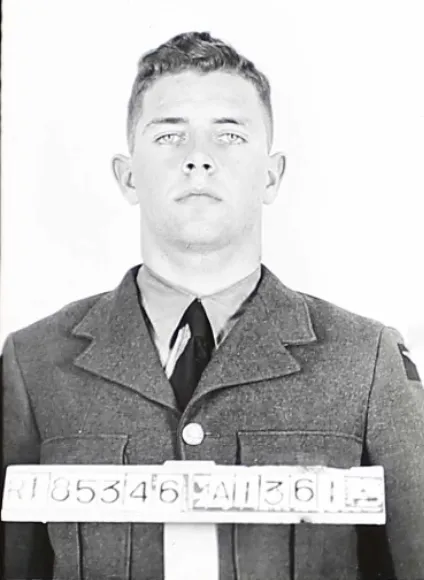

Birth Date: 1923
Born:
Son of Hayward Davidson Jack and Greta Hildur Johansson Jack, of Westmount, Province of Quebec, Canada.
Home: Montreal, Quebec
Enlistment:
Enlistment Date: Unknown
Service
RCAF
Unit
437 Sqn- Squadron
Omnia Passim Anything anywhere
Base
Rank
Flying Officer
Position
Flying Officer
Service Numbers
J/37117
Home
 Montreal, Quebec
Montreal, Quebec
Dakota KG315
Douglas Dakota Skytrain C-47 DC-3 AC-47 R4D Spooky Gooney Bird
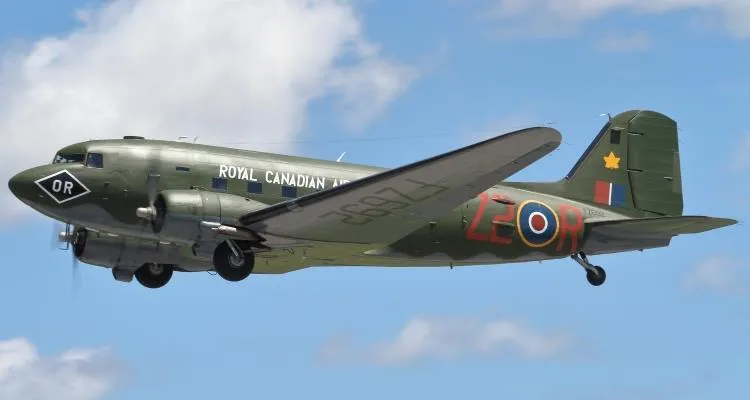
Canadian Warplane Heritage Museum
Development of the Douglas DC-3 started in early 1935 with the prototype flying by the end of the year. The first production aircraft was delivered to American Airlines in July 1936 and soon orders were pouring in from US and overseas airlines. The US Air Corps became interested in the DC-3 and ordered a military version, called the C-47 or Dakota. It had many capabilities, including dropping paratroops and supplies, evacuating the wounded, troop transportation and glider towing. Eventually, about 10,000 C-47s were built for the US military.
During WW II, the Royal Air Force received about 1,930 Dakotas and they became the RAF's main wartime transport aircraft. The RCAF took delivery of its first Dakota in March 1943, and at its peak had 169 on strength. Within Canada, they were operated by four transport squadrons and several ferry squadrons.
Overseas, Dakotas equipped RCAF 437 Squadron in Europe and RCAF 435 and 436 Squadrons in South East Asia. 437 Squadron was formed in England September 1944, where it supported the British and Canadian Armies fighting in Europe. Its most important actions involved glider towing for the airborne landings at Arnhem and the Rhine crossing at Wesel.435 and 436 Squadrons were formed in India in October 1944. They flew Dakotas in support of the British 14th Army in Burma where they dropped supplies to the British troops fighting the Japanese in the jungle.
At the end of WW II, all three squadrons were transferred back to England to provide air transport for the Canadian occupation forces in Germany. Dakotas continued in service with the Canadian Armed Forces until 1989, when 402 Squadron, based in Winnipeg, retired the last of them. Of the nearly 13,000 DC-3s built, many are still in service today, over 75 years after the aircraft's first flight.
The Museum's Dakota was built for the USAAF and was delivered to the Royal Air Force in February 1944 as FZ692 and the Royal Canadian Air Force 437 Squadron in September 1944. It was later renumbered as 12945 as part of the Canadian Armed Forces where it served with 424 Squadron for Search & Rescue at CFB Trenton. It performed JATO ignition in flight at the 1970 Canadian National Exhibition Air Show on the Toronto waterfront.
After it was struck off strength by the Canadian Armed Forces in 1973, the aircraft ended up with Environment Canada, where it was used for mineral and environmental surveys. C-GRSB was donated to the Canadian Warplane Heritage Museum in May 2014.
FZ692 has been restored to the paint scheme it would have worn at the end of World War II with 437 Squadron RCAF. FZ692 flew 208 operational trips with 437 Squadron and 16 with 233 Squadron for a total of 224. It ended up flying hundreds of individual legs between airfields in Europe. FZ692 participated in two major airborne operations, Normandy and the Rhine Crossing. It carried 298 casualties to medical aid and repatriated 456 prisoners of war. It carried over 5,100 passengers to destinations around Europe and carried over two hundred tons of freight (414,368 lbs).CWHM
 Canada Aviation Museum Dakota Overview
Canada Aviation Museum Dakota Overview
437 Sqn Omnia Passim ("Husky")
History of the Squadron during World War II (Aircraft: Dakota III, IV)
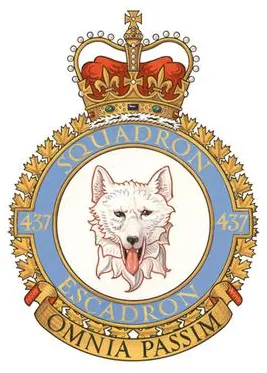
No. 437 was the 32nd RCAF squadron formed overseas in WWII. It was the first of three transport squadrons. It was inaugurated on September 14, 1944 at Blakehill Farm, Wiltshire, England . It flew Dakota aircraft, and its first operation was MARKET GARDEN, the airborne assault on Arnhem. It carried airborne troops and later was involved in resupply missions to the beleaguered Allied forces, losing 4 out of 10 aircraft involved. On 24 March 1945 the squadron took part in the airborne crossing of the Rhine river at Wesel (Operation VARSITY), towing 24 Horsa gliders with troops and equipment. After the end of hostilities the squadron provided transport services for Canadian units in Britain and Europe. It was finally disbanded at Odiham, Hampshire on June 15, 1946.
Overall, the squadron flew11,625 sorties, adding up to 32,355 operational hours. 14 aircraft were lost and 17 aircrew, of whom 2 were killed, 14 missing and 1 wounded. Awards gained by the squadron were 1 OBE, 8 DFCs, 2 AFCs 1 DFM, 1 MiD and 3 King's Commendations. Battle Honours were France and Germany 1944-45, Arnhem, Rhine.Wikipedia, Kostenuk and Griffin
Maps for Movements of 437 Squadron 1944-46
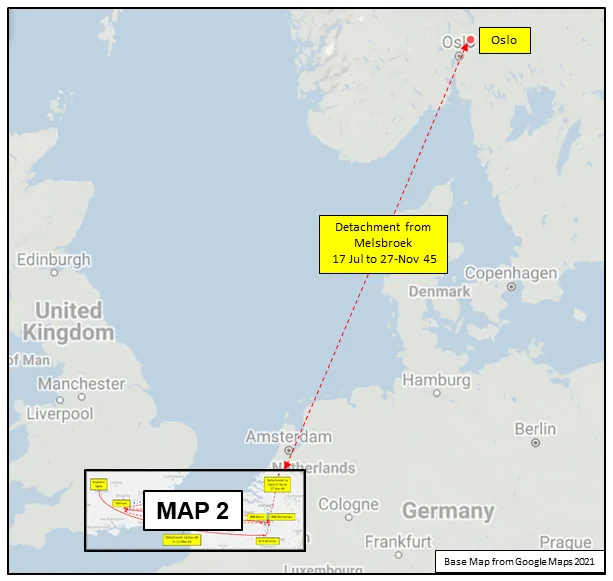 MAP 1: 437 Squadron Movements 1944-46 (right-click on image to display enlarged in new tab) | 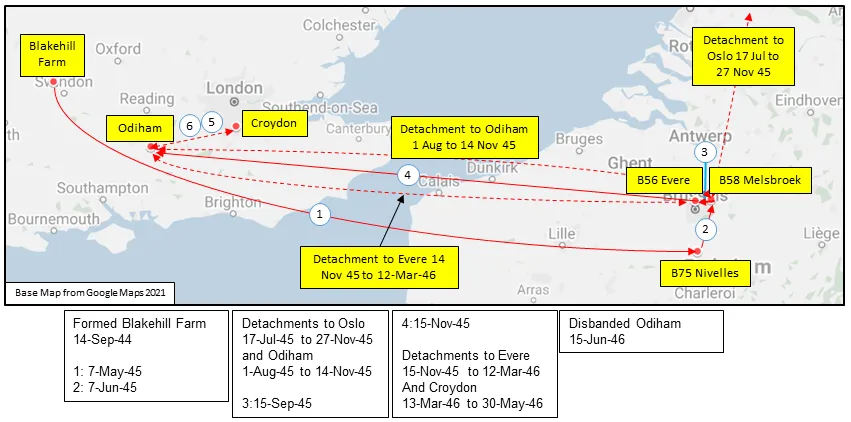 MAP 2: 437 Squadron Movements in Europe 1944-46 (detail of Map 1) |
437 Squadron History Summary 1944-46
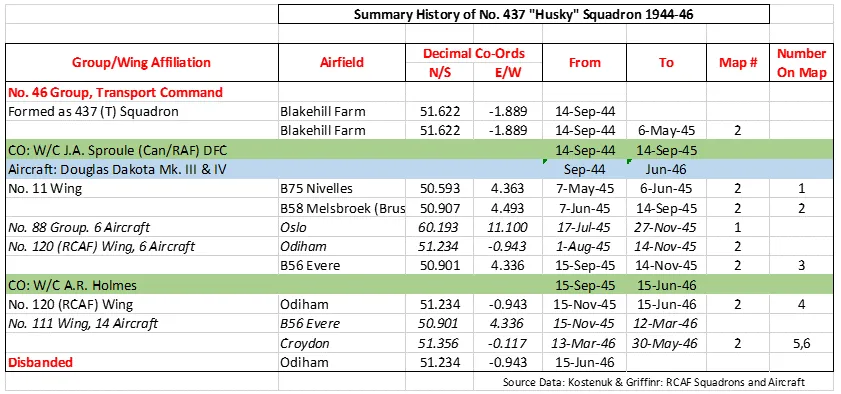
History of the Squadron Post-WWII (Aircraft: Yukon, Husky, Polaris)
The squadron was reformed at Trenton, Ontario on 1 October 1961. It has remained at Trenton ever since. It was originally equipped with CC-106 Yukon. It was re-equipped with the CC-137 Husky (modified Boeing 707) in 1972. While operating the Husky it provided Air to Air Refueling in addition to transport services. Two aircraft out of the fleet of five were modified to serve as refueling tankers in mid-1972 to meet a requirement to support the CF-5 tactical fighter. At the end of the useful life of the B707 in 1997, 437 Squadron was equipped with modified Airbus A-310 aircraft (CC-150 Polaris). The Squadron’s primary roles are long-range transport of personnel and equipment, air-to-air refueling of fighter aircraft and VIP transport. The Squadron occasionally performs aeromedical evacuation roles. Two CC-150 air-to-air refueling tankers were deployed to support Operation MOBILE during the 2011 military intervention in Libya. Canadian CF-188 fighter jets that enforce the no-fly zone over Libya under Operation ODYSSEY DAWN and Operation UNIFIED PROTECTOR were refueled by 437 Squadron.
437 Transport Squadron frequently supports government dignitaries while on official visits, including the Prime Minister of Canada and Queen Elizabeth II during Royal tours of Canada. In June and July 2011 the squadron provided transportation for the Duke and Duchess of Cambridge as they toured Canada and the United States.
 Canadian Virtual War Memorial
Canadian Virtual War Memorial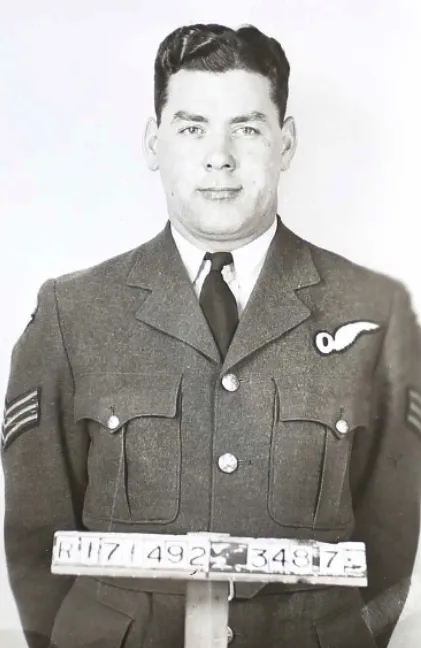
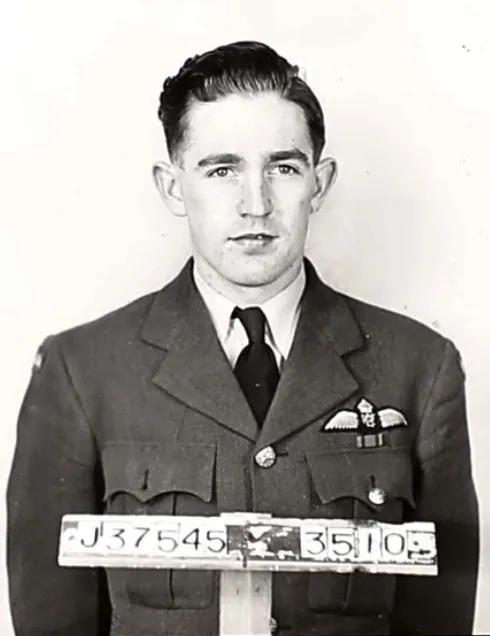
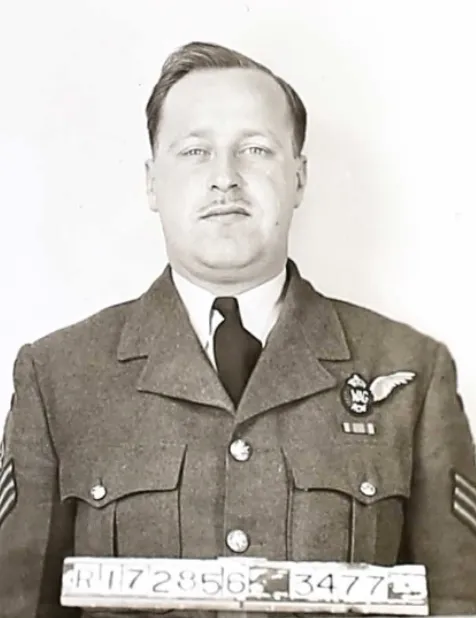
 C-47 Skytrain
C-47 Skytrain Wikipedia C-47 Skytrain
Wikipedia C-47 Skytrain Harold A Skaarup Web Page
Harold A Skaarup Web Page